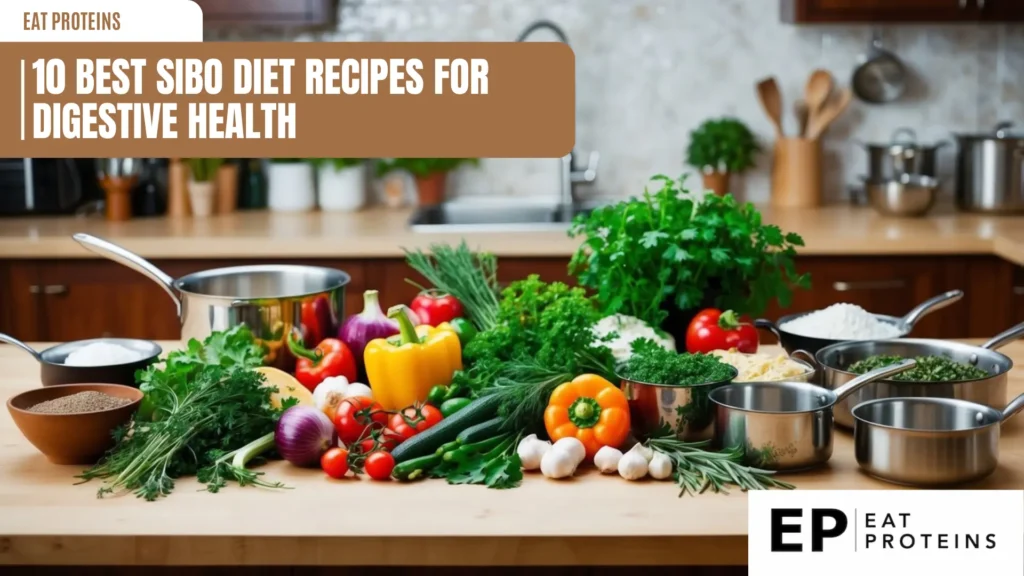
I’ve found some tasty recipes for people dealing with SIBO. SIBO stands for small intestinal bacterial overgrowth. It can cause tummy troubles and make eating hard. But with the right foods, you can feel better.
These 10 recipes are easy to make and follow SIBO diet rules. They use foods that are good for your gut. I’ll share meals for breakfast, lunch, and dinner. You’ll also find some yummy snacks. These dishes will help you stick to your SIBO diet without getting bored.
1. Grilled Chicken with Herbs

Grilled chicken with herbs is a tasty and easy meal for people following a SIBO diet. It’s packed with protein and flavor, without ingredients that might upset sensitive stomachs.
I find this dish simple to make. It only takes about 20 minutes of prep time and 15 minutes to cook. The recipe serves 4 people.
To make it, I start with 4 boneless, skinless chicken breasts. I mix 2 tablespoons of olive oil with 1 teaspoon each of dried rosemary, thyme, and oregano. Then I rub this mixture on the chicken.
Next, I heat the grill to medium-high. I cook the chicken for 6-8 minutes per side, until it reaches an internal temperature of 165°F (74°C).
This grilled chicken dish is versatile. I can serve it with a side of low-FODMAP veggies or a small portion of rice. It’s also great cold the next day in a salad.
The herbs not only add flavor but may help with digestion. This makes the recipe a good choice for those managing SIBO symptoms.
2. Zucchini Noodles with Pesto
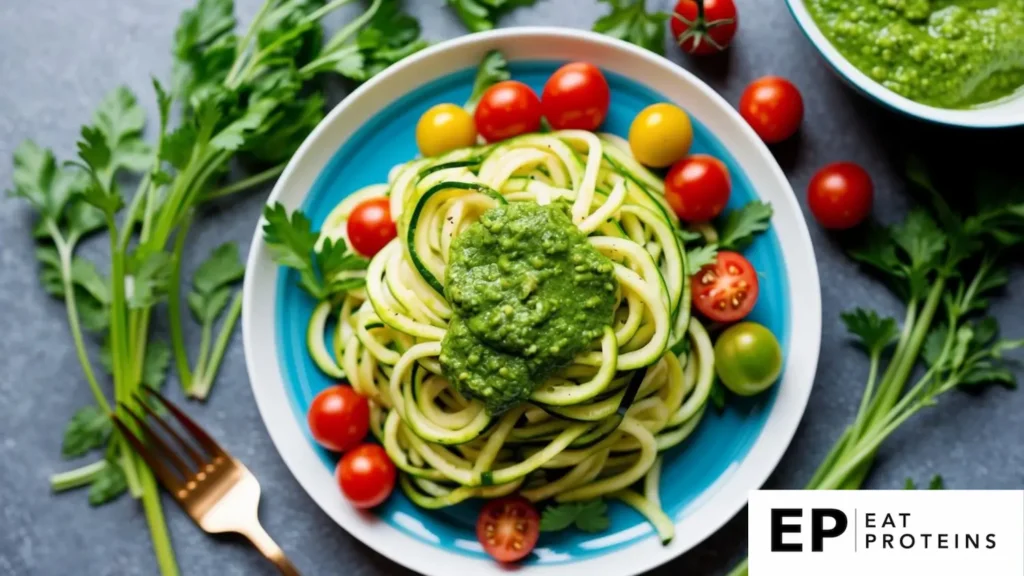
Zucchini noodles, also called “zoodles,” are a tasty low-carb option for those following a SIBO diet. I find them easy to make and a great pasta substitute.
To prepare, I spiralize 2-3 medium zucchini. This takes about 5 minutes. Then I heat 1 tablespoon of olive oil in a pan over medium heat for 30 seconds.
Next, I add the zoodles and cook for 3-5 minutes, stirring gently. I’m careful not to overcook them to avoid sogginess.
For the pesto, I blend 2 cups fresh basil, 1/4 cup pine nuts, 2 garlic cloves, and 1/4 cup olive oil in a food processor for about 1 minute. This creates a flavorful sauce that’s SIBO-friendly.
Finally, I toss the cooked zoodles with 2-3 tablespoons of pesto. The whole dish takes about 15 minutes to make.
This recipe is nutritious and gentle on the digestive system. It’s a simple way to enjoy a pasta-like meal while sticking to a SIBO diet plan.
3. Baked Salmon with Dill
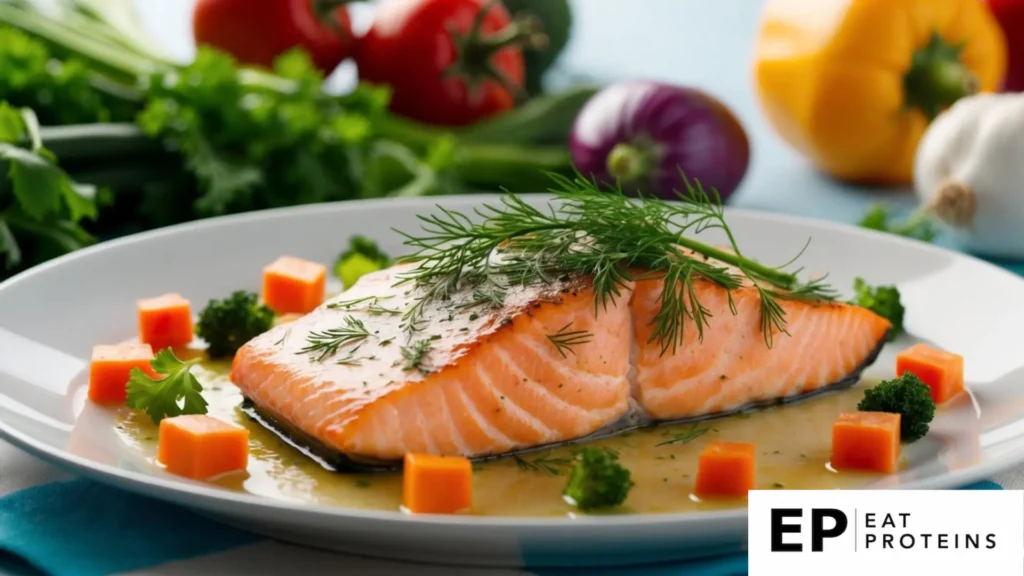
Baked salmon with dill is a simple yet tasty dish that’s great for the SIBO diet. I find it easy to make and packed with nutrients.
This recipe takes about 20 minutes to prepare and cook. It’s perfect for a quick weeknight dinner.
To make it, I start by preheating the oven to 400°F (200°C). Then, I place a 6-ounce salmon fillet on a baking sheet.
I sprinkle fresh dill, salt, and pepper over the salmon. Sometimes I add a squeeze of lemon juice for extra flavor.
Next, I bake the salmon for 12-15 minutes. The exact time depends on the thickness of the fillet.
The dish is done when the salmon flakes easily with a fork. It should be pink in the middle and slightly golden on top.
I like to serve this baked salmon with a side of steamed vegetables or a simple salad. It’s a filling meal that fits well into a SIBO-friendly diet plan.
4. Coconut Flour Pancakes
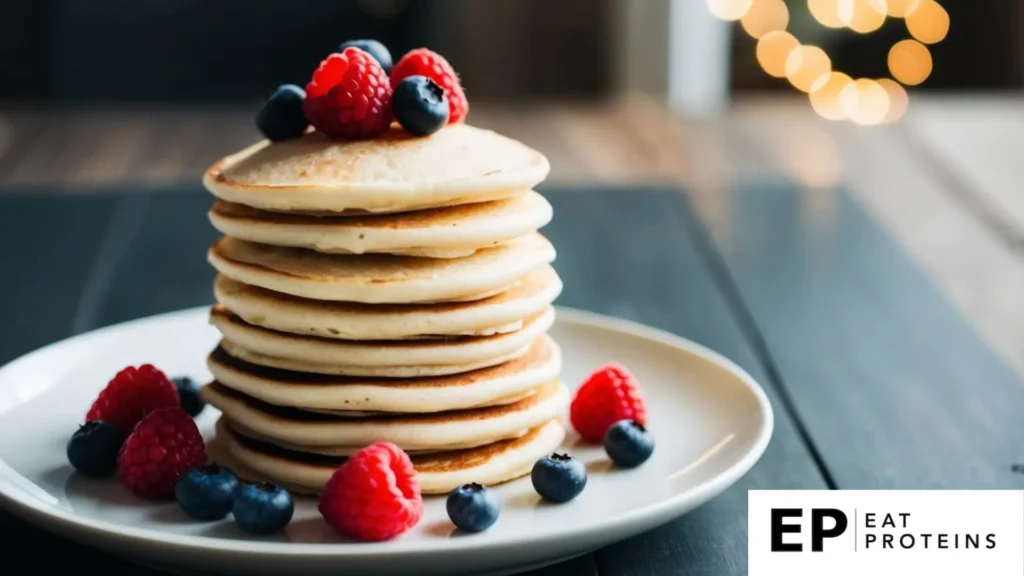
Coconut flour pancakes are a tasty, grain-free option for those following a SIBO diet. I find them easy to make and perfect for a quick breakfast.
To prepare, I mix 1/4 cup coconut flour with 1/4 teaspoon baking soda and a pinch of salt. In a separate bowl, I whisk together 4 eggs, 1/4 cup coconut milk, and 1 tablespoon honey.
I combine the wet and dry ingredients, stirring until smooth. The batter may seem thick, but that’s normal for coconut flour recipes.
I heat a non-stick pan over medium heat and add a small amount of coconut oil. For each pancake, I pour about 1/4 cup of batter into the pan.
I cook the pancakes for 2-3 minutes on each side until golden brown. The cooking time may vary, so I keep a close eye on them.
These pancakes are nutrient-dense and gut-friendly, making them an excellent choice for those managing SIBO symptoms.
5. Lemon Garlic Shrimp
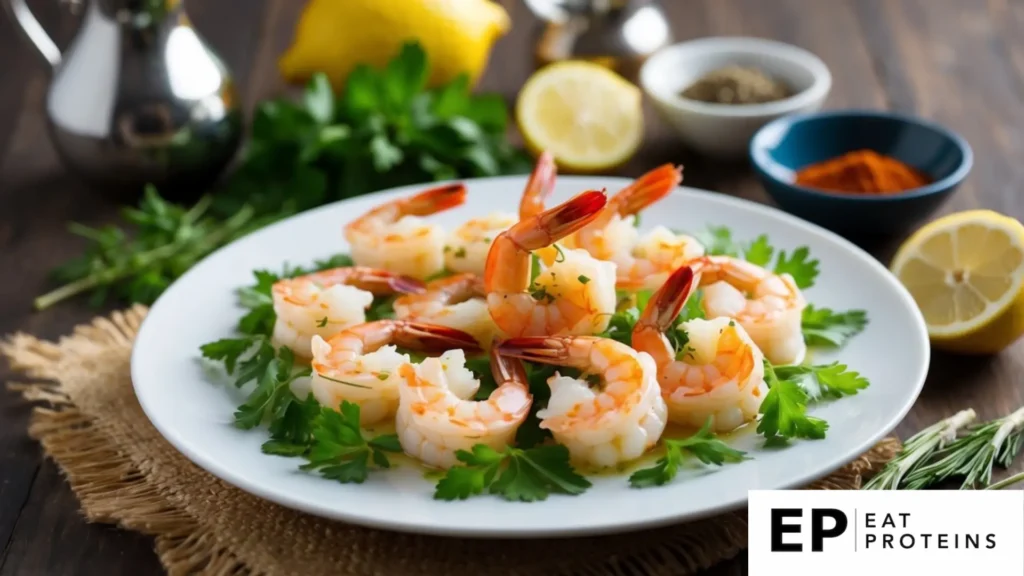
Lemon Garlic Shrimp is a tasty and simple dish that fits well with a SIBO diet. SIBO stands for Small Intestinal Bacterial Overgrowth, and this recipe uses ingredients that are gentle on the digestive system.
I find this dish quick and easy to make. It takes about 15 minutes from start to finish, making it perfect for busy weeknights.
To prepare, I start by heating 2 tablespoons of olive oil in a large skillet over medium heat. Then, I add 1 pound of peeled and deveined shrimp to the pan.
Next, I mince 3 cloves of garlic and add them to the shrimp. I cook everything for about 2-3 minutes until the shrimp turn pink.
For the final touch, I squeeze the juice of one lemon over the shrimp and sprinkle with salt and pepper to taste. I let it cook for another minute to blend the flavors.
This Lemon Garlic Shrimp is not only delicious but also nutritious. Shrimp is a good source of protein and the lemon adds a boost of vitamin C.
6. Roasted Vegetable Medley
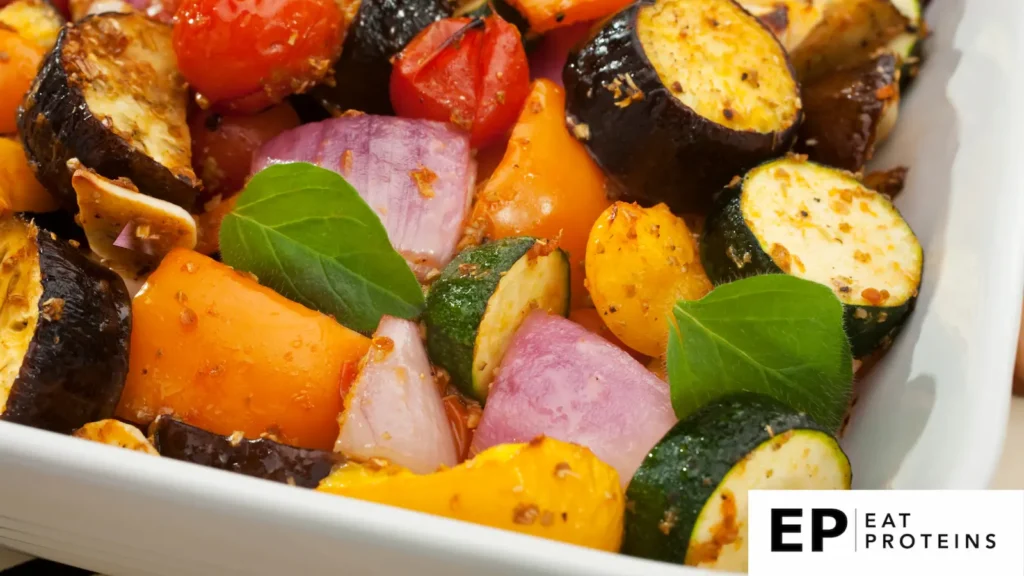
Roasted vegetable medley is a simple yet flavorful dish that’s perfect for a SIBO-friendly diet. I find it’s one of the easiest recipes to prepare and customize based on personal preferences.
To make this dish, I start by selecting low-FODMAP vegetables like carrots, zucchini, bell peppers, and eggplant. I cut them into roughly 1-inch pieces to ensure even cooking.
I preheat the oven to 400°F (200°C). Then I toss the vegetables with 2 tablespoons of olive oil and season them with salt, pepper, and dried herbs like rosemary or thyme.
I spread the vegetables on a baking sheet in a single layer. This helps them roast evenly and develop a nice caramelized exterior.
The cooking time is usually around 25-30 minutes. I make sure to stir the vegetables halfway through for even browning.
Once done, I let them cool for a few minutes before serving. This roasted vegetable medley can be eaten on its own or as a side dish with grilled meats for a complete SIBO-friendly meal.
7. Eggplant Lasagna

Eggplant Lasagna is a tasty, low-carb option for those following a SIBO diet. I find it’s a great way to enjoy the flavors of traditional lasagna without the wheat-based noodles.
This dish is fairly easy to make. I start by slicing eggplant into thin sheets to replace pasta layers. Then I grill or bake these slices until they’re tender.
For the filling, I use a mixture of ground meat and low-FODMAP vegetables. I season it with herbs like basil and oregano for extra flavor.
I layer the eggplant slices with the meat mixture and a small amount of SIBO-friendly cheese like hard Parmesan. I repeat these layers until I’ve used all ingredients.
Finally, I bake the lasagna at 375°F (190°C) for about 30-35 minutes. The result is a comforting, SIBO-friendly meal that satisfies my pasta cravings.
8. Turmeric Cauliflower Rice
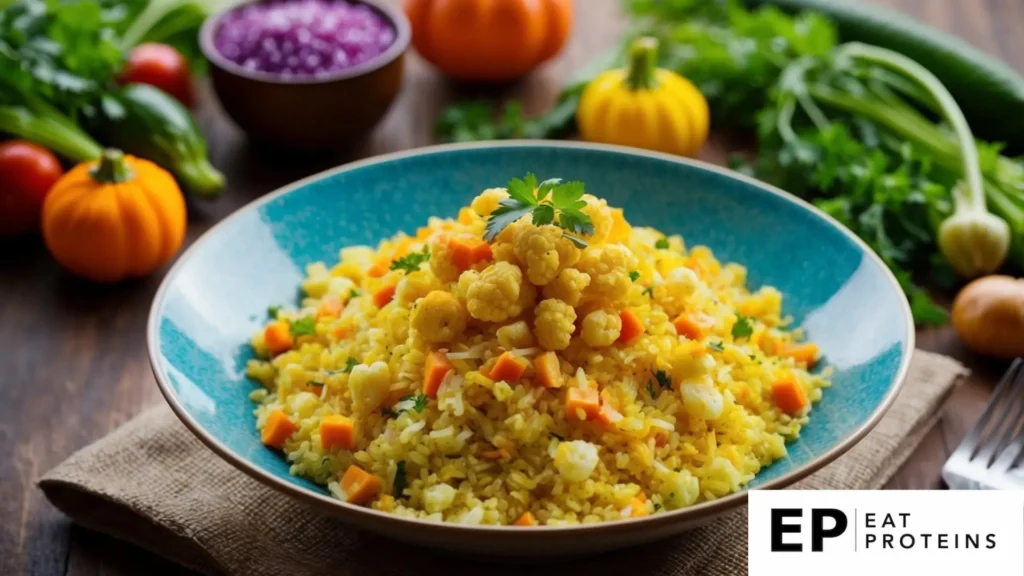
Turmeric cauliflower rice is a tasty, low-carb alternative to regular rice that’s perfect for a SIBO diet. It’s easy to make and packed with nutrients.
To prepare this dish, I start by grating a head of cauliflower or pulsing florets in a food processor until they resemble rice grains. This creates the base for the dish.
Next, I heat 1 tablespoon of coconut oil in a pan over medium heat. I add 1/2 teaspoon of dried turmeric and roast it for about 30 seconds to enhance its flavor.
I then add the cauliflower “rice” to the pan and stir-fry for about 5-7 minutes until it’s tender but still has a slight crunch. I season it with salt and pepper to taste.
This recipe takes about 15 minutes total to prepare and cook. It’s a versatile side dish that pairs well with many SIBO-friendly proteins and vegetables.
Turmeric cauliflower rice is not only delicious but also offers anti-inflammatory benefits, which can be helpful for those with digestive issues.
9. Cabbage Stir-Fry
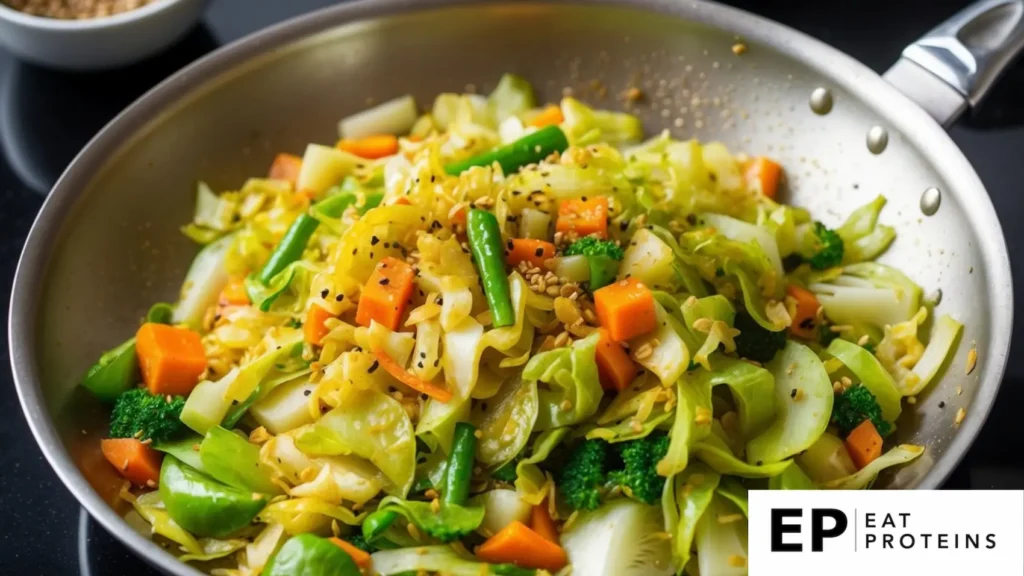
Cabbage stir-fry is a simple and tasty dish that fits well into a SIBO diet. I find it’s quick to prepare and packed with nutrients.
The main ingredient, cabbage, is low in FODMAPs when eaten in moderate amounts. I use common cabbage, not savoy, as it’s better tolerated by those with digestive issues.
To make this dish, I start by slicing 2 cups of cabbage thinly. I heat 1 tablespoon of oil in a pan over medium heat.
Next, I add the cabbage to the hot pan and stir-fry for about 5 minutes until it starts to soften. I season with a pinch of salt and pepper to taste.
For extra flavor, I sometimes add 1 teaspoon of grated ginger or a clove of minced garlic. These ingredients can add zest without causing issues for most people with SIBO.
I cook the cabbage for another 2-3 minutes until it’s tender but still crisp. The total cooking time is usually under 10 minutes.
This dish is versatile and can be eaten on its own or as a side. It’s a great way to include more vegetables in my SIBO-friendly diet.
10. Herb-Crusted Cod
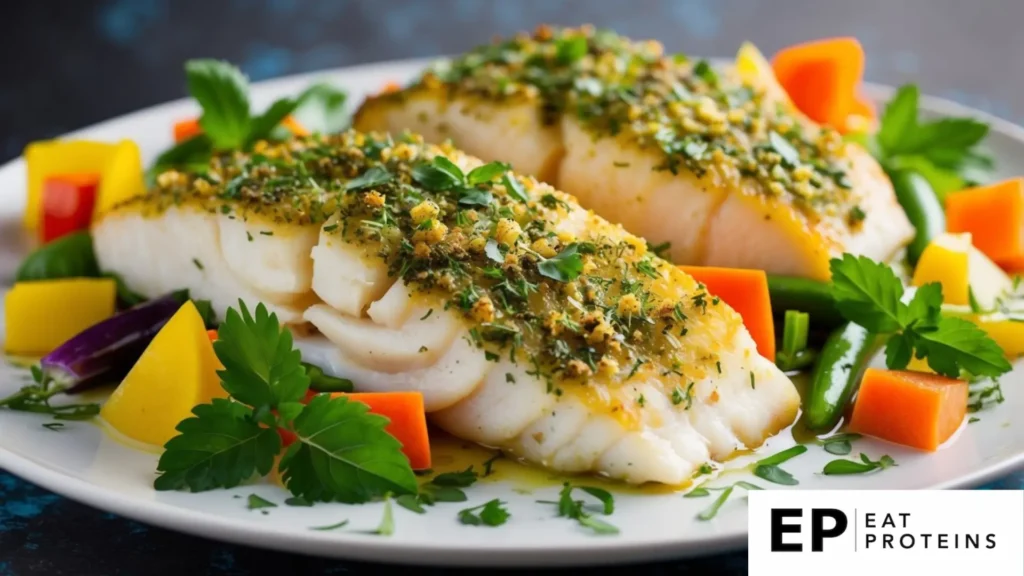
Herb-crusted cod is a tasty and easy dish that fits well into a SIBO diet. I find it’s a great way to add flavor to mild fish without using ingredients that might trigger symptoms.
To make this recipe, I start with fresh cod fillets. I coat them in a mixture of gluten-free breadcrumbs and finely chopped herbs like parsley, dill, and thyme.
The cooking process is simple. I preheat the oven to 400°F (200°C). Then I place the coated fish on a baking sheet and cook it for about 12-15 minutes.
The result is a flaky, tender fish with a crispy herb crust. It’s important not to overcook the cod, as it can dry out quickly.
I like to serve this dish with a side of roasted low-FODMAP vegetables. It makes for a balanced, SIBO-friendly meal that’s both nutritious and satisfying.
This recipe is versatile. I can easily adjust the herbs based on what’s available or my personal taste preferences. It’s a reliable option when I need a quick, SIBO-friendly dinner.
What is the SIBO Diet?

The SIBO diet helps manage small intestinal bacterial overgrowth. It focuses on limiting certain foods that can feed harmful gut bacteria. I’ll explain what SIBO is and why diet matters for treatment.
SIBO stands for Small Intestinal Bacterial Overgrowth. It happens when too many bacteria grow in the small intestine. Normally, most gut bacteria live in the large intestine.
With SIBO, bacteria in the small intestine can cause problems. Common symptoms include:
- Bloating
- Gas
- Stomach pain
- Diarrhea
SIBO can lead to nutrient deficiencies and other health issues if left untreated. Doctors can test for SIBO using breath tests or other methods.
How Important is the SIBO Diet?
A SIBO diet is key for managing symptoms and supporting treatment. The main goals are to:
- Starve the bad bacteria
- Feed the good bacteria
- Reduce inflammation
I recommend avoiding foods that feed harmful bacteria. These include sugar, refined carbs, and certain fibers. Instead, focus on easily digestible foods that don’t ferment in the gut.
Simple recipes using low-FODMAP ingredients can help. FODMAPs are types of carbs that can trigger SIBO symptoms. A dietitian can help create a personalized SIBO meal plan.
What are the Key Ingredients for SIBO Recipes?
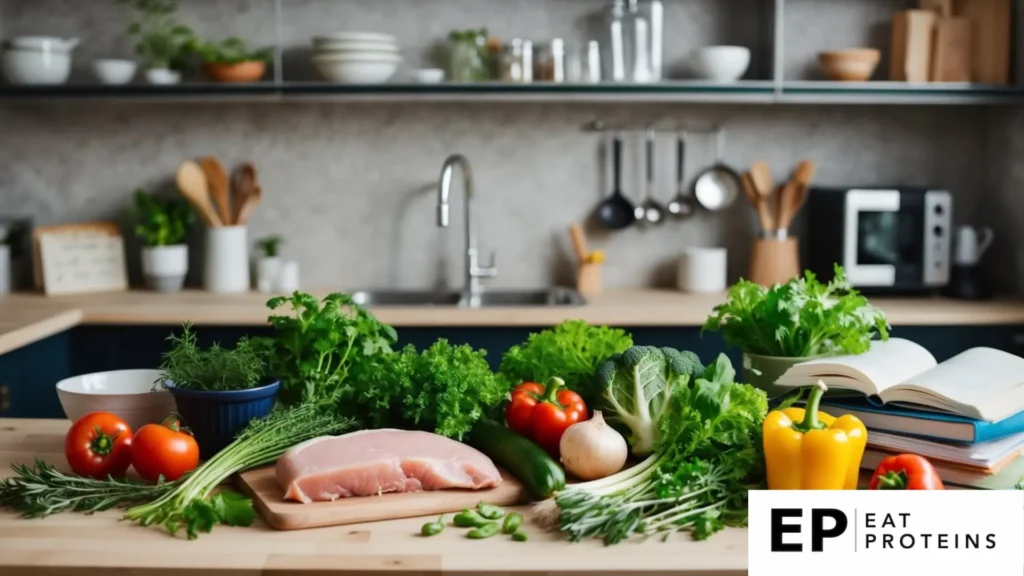
When preparing meals for SIBO, I focus on certain ingredients that are gentle on the digestive system and support gut health. I choose foods that are low in fermentable carbs, include beneficial fermented options, and incorporate high-protein ingredients.
What are Low FODMAP Foods in the SIBO Diet?
Low FODMAP foods are crucial for SIBO-friendly recipes. I rely on vegetables like carrots, spinach, and zucchini. For fruits, I opt for berries, oranges, and grapes.
Rice, quinoa, and gluten-free oats are my go-to grains. I use lactose-free milk and hard cheeses as dairy alternatives.
Herbs and spices add flavor without irritating the gut. I love using basil, oregano, and turmeric in my cooking.
Nuts like almonds and walnuts provide healthy fats and protein in small amounts. I’m careful with portion sizes to avoid digestive issues.
How Do Fermented Foods Fit into the SIBO Diet?
Fermented foods can support gut health when introduced slowly. I include small amounts of sauerkraut, kimchi, and pickles in my meals.
Kombucha and kefir are probiotic drinks I enjoy in moderation. Making homemade kefir is easy and cost-effective.
Miso paste adds umami flavor to soups and sauces. I use it sparingly due to its high sodium content.
Tempeh is a fermented soy product that’s easier to digest than other soy foods. I marinate and grill it for a protein-rich meal.
What are Some High-protein Ingredients for the SIBO Diet?
Protein is essential for SIBO diets. I rely on lean meats like chicken, turkey, and fish as primary protein sources.
Eggs are versatile and nutrient-dense. I prepare them boiled, scrambled, or as part of a frittata.
Greek yogurt, when tolerated, provides both protein and probiotics. I use it as a base for dips or smoothies.
Lentils and chickpeas, when properly prepared and consumed in small amounts, can be good protein sources. I soak them overnight to improve digestibility.
Tofu, while not fermented, is a soy product that some people with SIBO can tolerate. I use extra-firm tofu in stir-fries and salads.
What are Common Mistakes to Avoid on the SIBO Diet?
When following a SIBO diet, I’ve noticed some common mistakes that people often make. Being aware of these can help you stick to the diet more effectively.
One mistake is eating too many fermentable foods. These can feed the bacteria in your small intestine, making symptoms worse.
Another error is not eating enough variety. It’s easy to get stuck eating the same few “safe” foods. This can lead to nutrient deficiencies over time.
Some people make the mistake of not retesting after treatment. It’s important to make sure the SIBO is actually gone before changing your diet.
Eating large portions is another common mistake. Smaller, more frequent meals are often better for digestion.
Not drinking enough water is an oversight I see often. Staying hydrated is key for gut health.
Lastly, some people cut out all carbs. While limiting certain carbs is important, some are necessary for a balanced diet.
Remember, everyone’s gut is different. What works for one person might not work for another. It’s important to listen to your body and work with a healthcare provider.
